The recipe for Tomato and Ginger Chutney in Madhur Jaffrey’s new book Vegetarian India comes not from Kolkata but from a South Indian Muslim cook in Albany, New York.
There are recipes from Jaffrey's physical therapists, from store clerks, and from notes she made while trying to put lunch together. There are recipes from ashrams, from jewelry stores, from restaurants, and from the kitchens of Jaffrey's friends in Bangalore and Bombay. There are recipes from Hyderabad, from Varanasi, from Karnataka, Mysore, and Rajasthan.

Jaffrey's book does a great service by showcasing the diversity of vegetable-based cuisine in India and is guaranteed to introduce even the most well-versed non-Indian (or Indian!) cook to new techniques, ingredients, or regional variations. The downside to all this information, however, is that it can be overwhelming to navigate.
With classics and modern takes, simple riffs and complex procedures, everyday recipes and special ocassion feasts, it's hard to know where to get started. If you're new to cooking Indian food and only familiar the one type of dal your local restaurant prepares, how should you pick which of the twenty-five dal recipes to begin with?
To make it a little easier for you to decide what to make first, we've picked out some of the recipes in the book (for dal, poriyal, bhartha, upma, rice, chutney, and yogurt sauces) that best illustrate Jaffrey's style and breadth. Pick and choose based on whether you want to make a dish that's super-traditional or highly-improvised, afternoon-consuming or whippet-fast, super-simple or a little more involved.
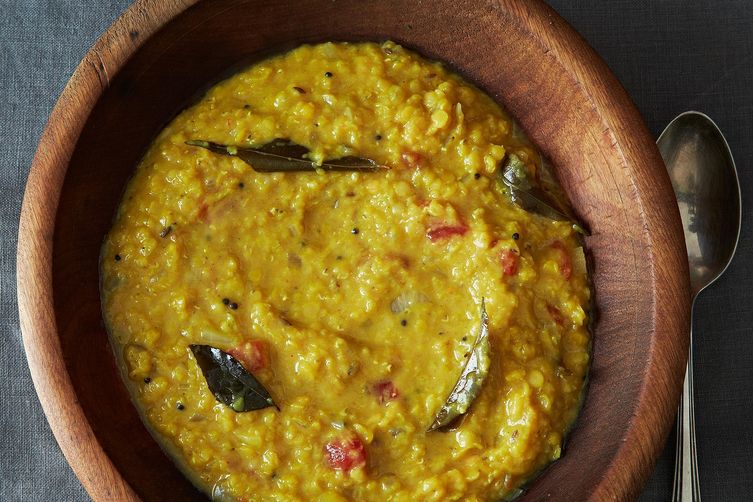
Dal: Jaffrey explains that in India, the word "dal" applies to the whole family of dried beans, pulses, and legumes (and this includes various versions of the same dal—whole, whole without skin, split with skin, split without skin—along with dal flours, too). Each dal has a distinct taste and texture and there are countless regional variations. Jaffrey writes, "Eating dal every day is never boring for an Indian, any more than eating meat every day is boring for meat eaters."
-
Less traditional: Chana Dal with Yellow Squash, Chayote, or Doodhi (page 130)
While this Gujarati dish traditionally uses an Indian squash know as "doodhi" or "ghiya," Jaffrey offers a chayote, a South American pear-shaped vegetable, or a yellow squash as a substitute. Unlike northern-style dals, this one is spicy and sweet (the ingredient list includes 2 teaspoons of jaggery or brown sugar).
-
More traditional: Mixed Dal, Marwari-Style (page 154)
From the Marwari community (a group of highly successful business people originating in the deserts of Rajasthan) comes this traditional recipe that combines four types of dal (chana, toovar, split urad, and split mung beans) into a thick, nutritious dish best eaten with flatbread.
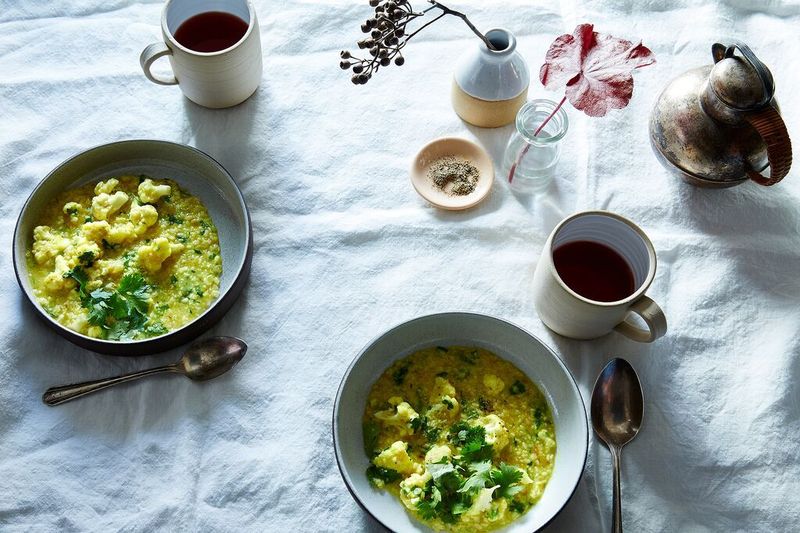
Poriyal: Technically from Tamil Nadu but found all over South India, these vegetable stir-fries are made in a karhai. There are hundreds of variations, all of which have a simple method: Stir-fry mustard seeds and dals (which, here, act as spices!) in a tiny bit of oil, throw in red chilies and curry leaves, then add cooked or raw vegetables and stir-fry.
-
More complicated: Stir-Fried Eggplant Cooked in a Tamil Nadu Style (page 55)
Here, you'll make your own spice mix by roasting chana dal, whole coriander, and dried hot chilies, then pulverizing them in a spice grinder. Then, you'll stir-fry whole brown mustard seeds, a handful of fresh curry leaves, and onion. Add diced eggplant (that's been soaked in water, drained, and dried) and the ground spices and cook, covered, for 25 minutes, tending to the vegetables by adding a few tablespoons of water every 6 minutes.
-
Less complicated: Mysore-Style Stir-Fried Beets (page 66)
This must be the best thing you can do with cooked beets. It has the same flavorings as the eggplant dish above but with the addition of green chilies, grated coconut, and cilantro. All you have to do is stir-fry the spices and the onion, then add the chopped boiled beets and a bit of water and cook on low heat for 10 minutes.
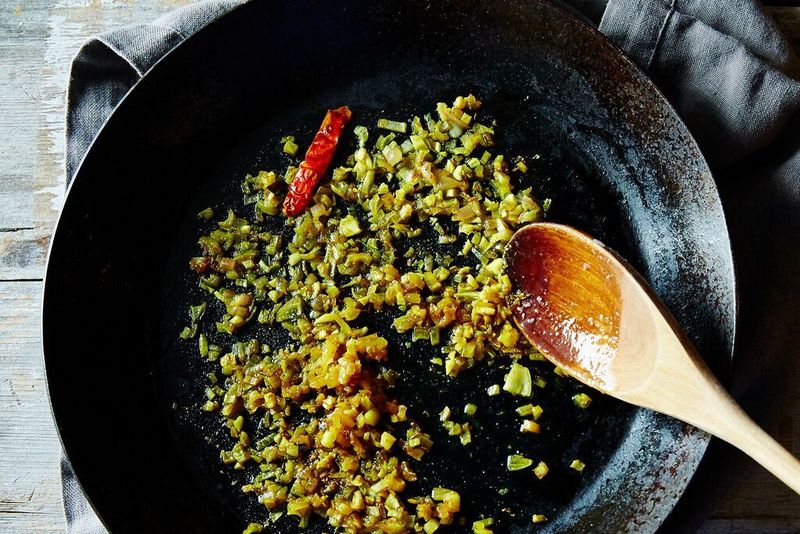
Bhartha: These mashed vegetable dishes, seasoned in any number of ways, are eaten with flatbreads in northern India and rice in southern India.
-
More Familiar: Simple Twice-Cooked Eggplant (page 53)
You've probably seen this dish on the menu at your neighborhood Indian restaurant. To make it at home, you'll begin by pricking the eggplant and roasting it for 75 minutes. It's then peeled, finely chopped, and cooked on the stove with onion, spices (cumin, fennel, and nigella seeds), ginger, garlic, green chilies, and tomatoes.
-
Less Familiar: Turnip Bharta (page 110)
Here, you'll skip the fennel and nigella seeds and instead add mashed turnips to a mixture of tomatoes that have been cooked-down with ginger, garlic, green chilies, and cumin.
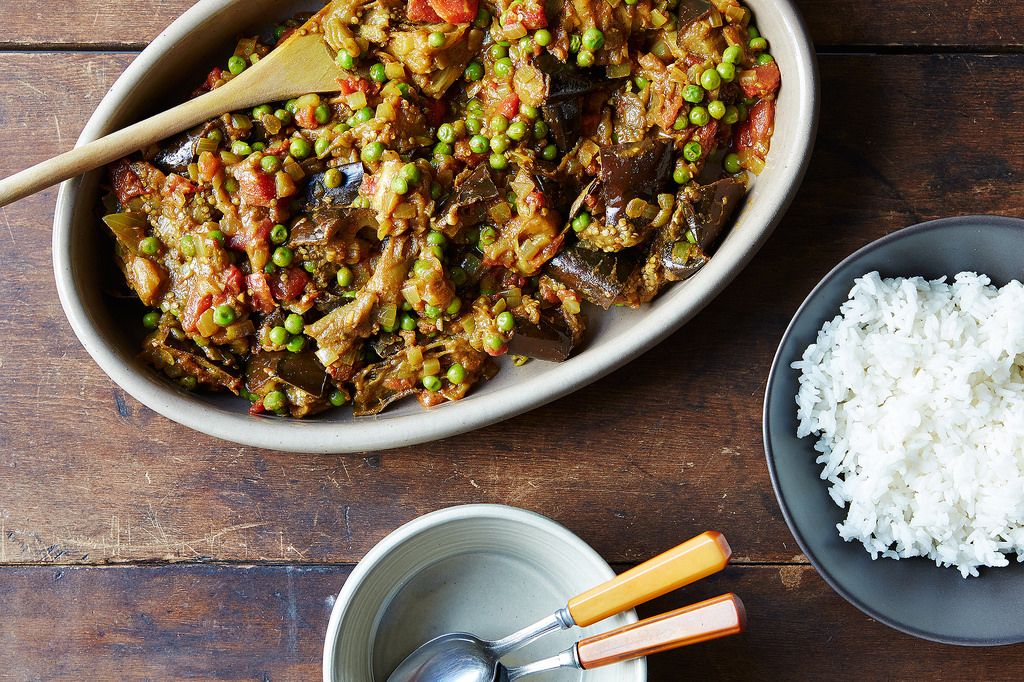
Upma: "The Western world has no real equivalent for upma," Jaffrey writes. She describes these savory pilaf-like dishes as less dense, less heavy, less wet versions of risotto. The basic ingredient is a grain, most commonly poha (flattened rice) and/or sooji (Indian semolina), bolstered with vegetables and spices.
-
Make it with what's in your pantry: Quinoa “Upma” with Corn and Mint (page 209)
While you might not find quinoa in India (or an Indian restaurant in U.S.), this "upma" was born when Jaffrey discovered Western grains can make a good substitute for sooji or poha. The quinoa is cooked first, then stir-fried with vegetables and seasonings. It's a great way to add flavor (from curry leaves, mustard seeds, turmeric, chilies, and herbs) to the quinoa you cooked at the beginning of the week.
-
Take a trip to a special grocery store: Flattened Rice with Cauliflower and Peas (page 202)
The flattened rice known as poha is a common snack and breakfast in eastern, western, and southern India. Here, it's partially reconstituted, then drained and stir-fried with spices (turmeric, curry leaves, asafetida, mustard and cumin seeds) and vegetables (onion, cauliflower, peas, and chiles). Poha can also be added to puddings, yogurt dishes, and, along with spicy nuts and seeds, snack mix.
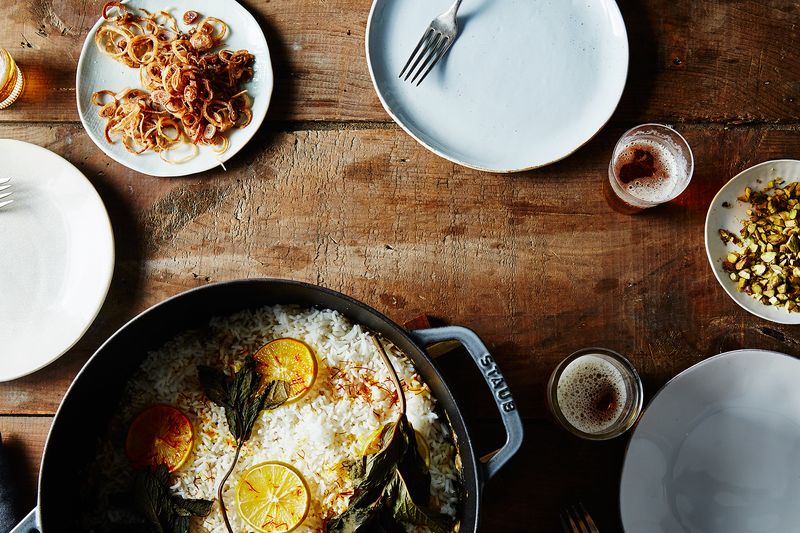
Rice:
-
Soothing: Yogurt Rice (page 290)
This southern Indian dish—in which warm, just-cooked rice is mixed with plain yogurt and a bit of milk, then seasoned with a tarka—is eaten at the end of the meal as an antitode to the fiery foods that came before it. Jaffrey also says you can add in diced or grated cucumbers, grated carrots, diced grapes, and pomegranate seeds and eat it like a salad.
-
Sweet and Sour: Berry Pilaf (page 185)
Jaffrey recreated this recipe after she couldn't get the original recipe from the Britannia and Company Restaurant in Bombay (as legend goes, the British ambassador also asked for it, once upon a time). Made with saffron, sugar, hot milk, dried barberries (or, if you can't find them, cranberries), cardamom, cinnamon, and bay, it's a party dish that goes well with eggplant or spinach.
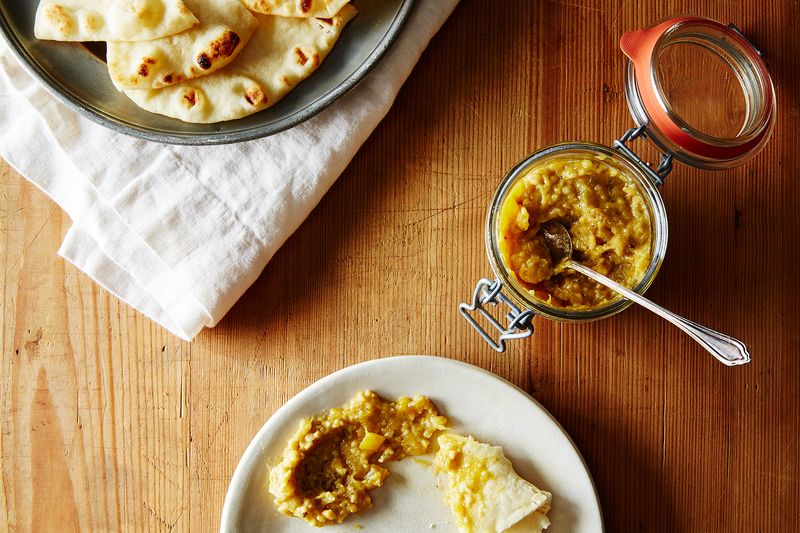
Chutneys:
-
Easy and Versatile: Simple Coconut Chutney (page 306)
Made with just coconut powder, chopped hot green chilies, sugar, salt, and lemon or lime juice, this chutney comes together in 5 minutes and goes well with most meals (especially dosas).
-
Sweet: Sweet Green Mango Chutney (page 319)
Frustrated by unripe sour mangoes? In this recipe, which comes from a Bengali village, the mangoes are diced, then boiled in salt water until very soft. They're then added to hot oil that's been seasoned with mustard seeds and chilies. Add a bit of sugar, a pinch of salt, then cook and mash the mangoes for another five minutes.
-
Life-changing?: Homemade Mustard Sauce (page 323)
It's hard to find a bottle of kasundi, a Bengali Mustard sauce, in the West, so Jaffrey went about Macgyvering her own version. All you have to do is simmer white wine vinegar, cumin, turmeric, and sugar, then mix it into store-bought whole-grain mustard. Use it anywhere you'd use grainy mustard.

Yogurt relishes, dipping sauces, and dressings:
-
Simple and Southern: Simple Seasoned Yogurt, South-Indian Style (page 327)
The "simplest of generic South Indian Yogurt relishes," it's made by pouring hot oil seasoned with urad dal, whole brown mustard seeds, dried red chilies, and curry leaves into plain yogurt. The recipe comes from the Windflower Resort in Mysore, where it appears on the table with all orders.
-
Simple and Northern: Simple Seaseond Yogurt, North-Indian Style (page 326)
There are no mustard seeds, chilies, or curry leaves here. Instead, the northern Indian version is made by mixing together yogurt, salt, ground roasted cumin seeds, and chili powder. Jaffrey says you can add it to vegetables and cooked legumes, or serve it as a side with all northern Indian meals.
-
For the more adventurous: Yogurt and Pineapple Salad, Kerala-Style (page 335)
Not as subtle or simple as the other two yogurt accompaniments, this one is spicy and sweet and meant to be paired with hot curries. To make it, you heat diced pineapple and its juices with green chilies, coconut powder, and a whole load of spices. You stir the cooled pineapple into yogurt, then top with a tadka made of red chilies and shallots.
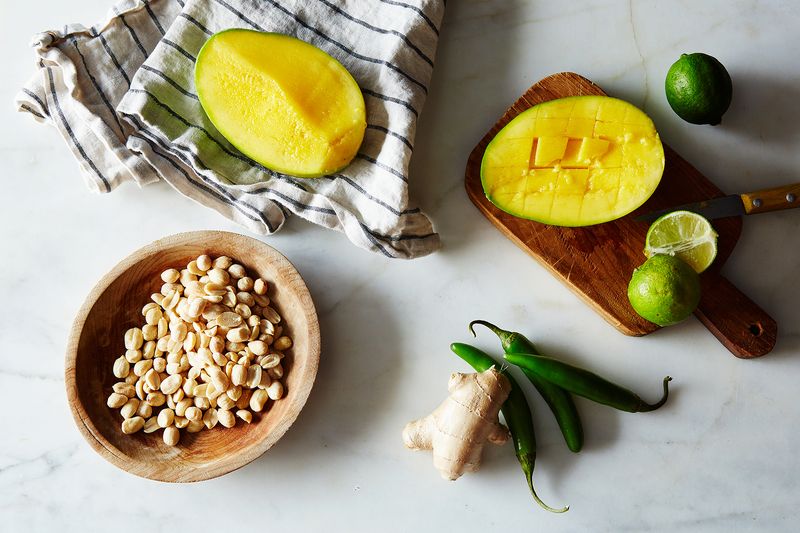
And, for making right now, recipes for autumn (and your Thanksgiving table):
-
Stir-Fried Orange Pumpkin or Butternut Squash (page 114):
While butternut squash are rare in India, Jaffrey says they make a perfect substitute for the more traditional orange pumpkin. Here, urad dal is fried with mustard seeds and red chilies before the onion and squash are added. Then the pumpkin is cooked with water, brown sugar, and cumin and cooked until tender.
-
Gingery Cranberry Chutney with Mustard Seeds (page 320):
Canned cranberry sauce is boring. But mash it, season it with a reduction of cider vinegar, mustard seeds, fresh ginger, and chili powder, then simmer it for ten minutes, and you'll have something that sparks conversation at your holiday table.
What's your favorite Madhur Jaffrey recipe? Leave us tips in the comments below!
Photos by Bobbi Lin and James Ransom.










See what other Food52 readers are saying.